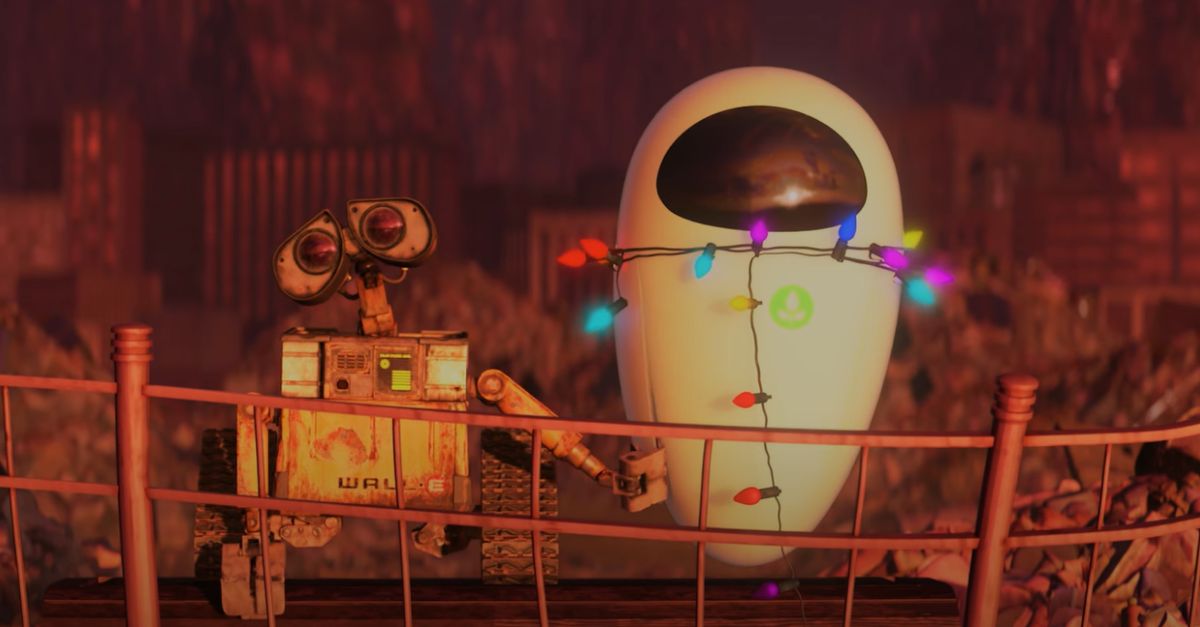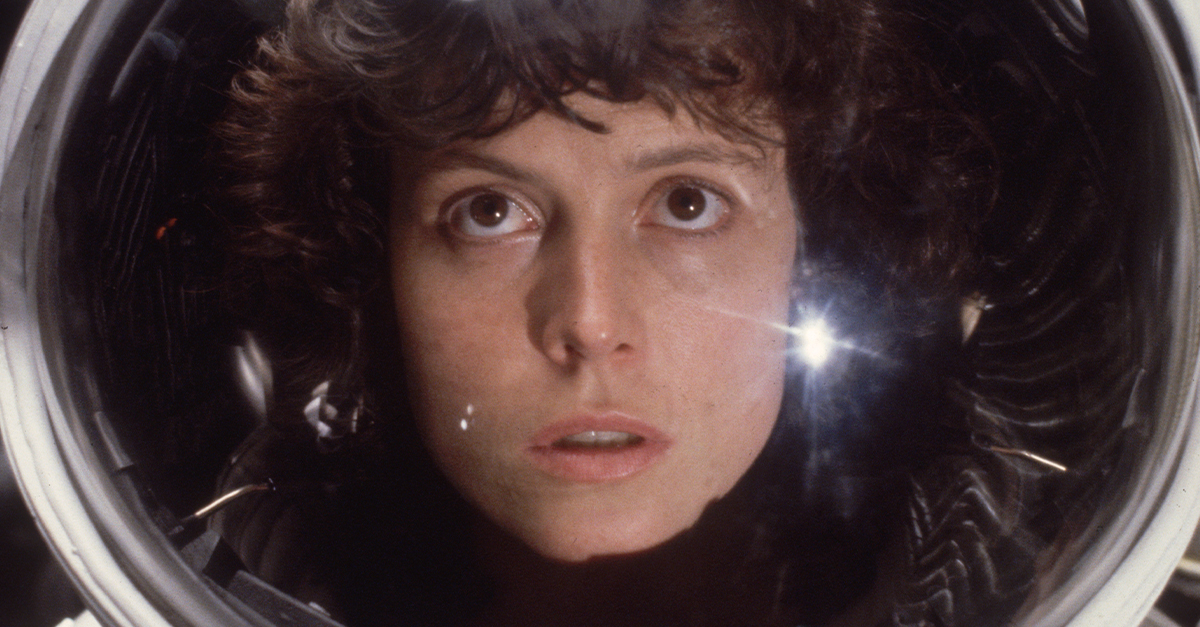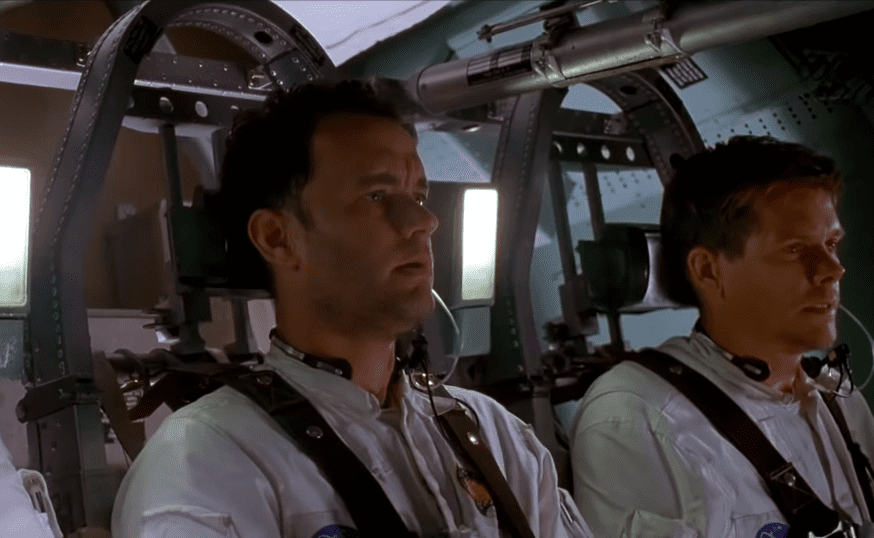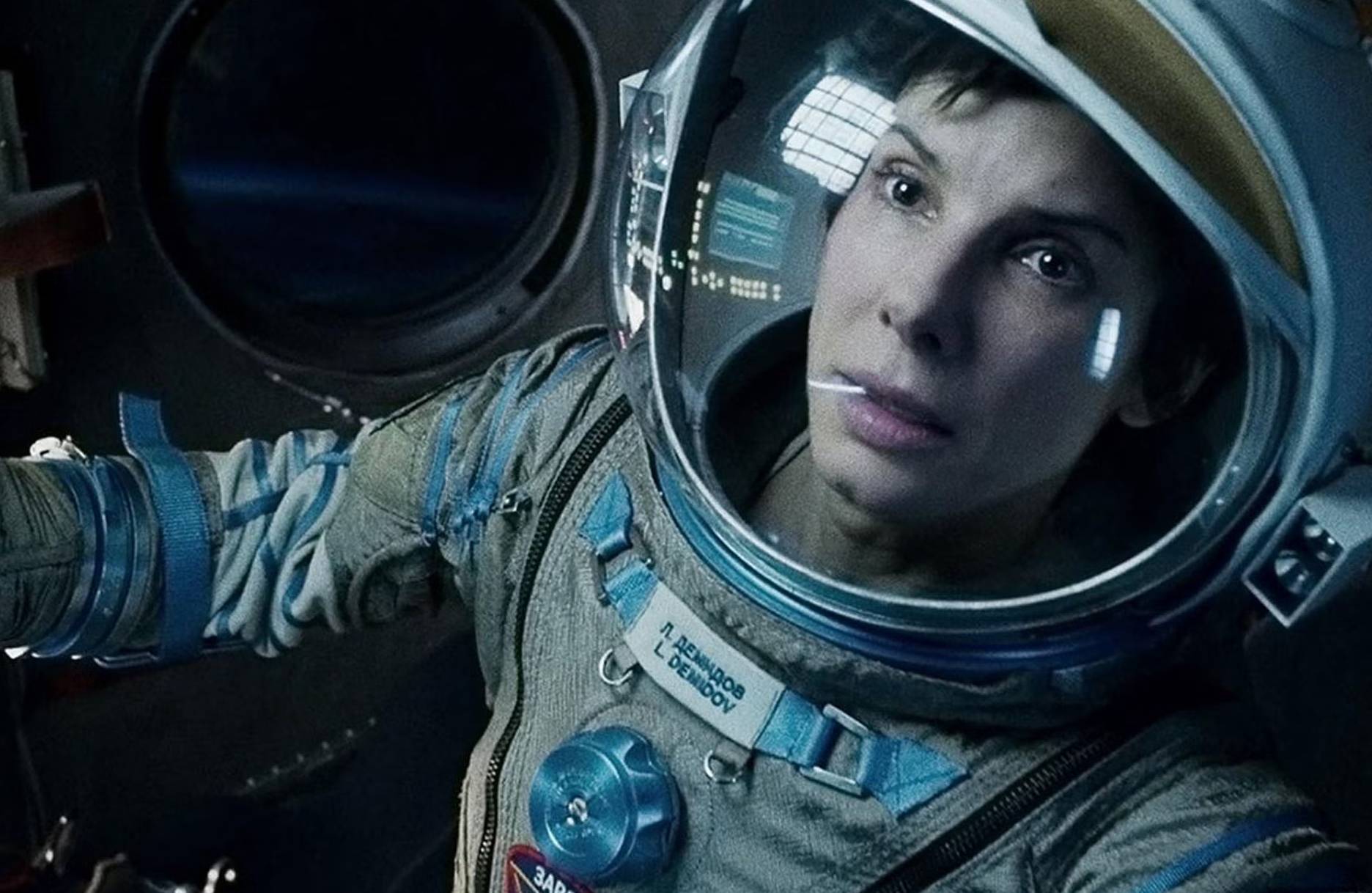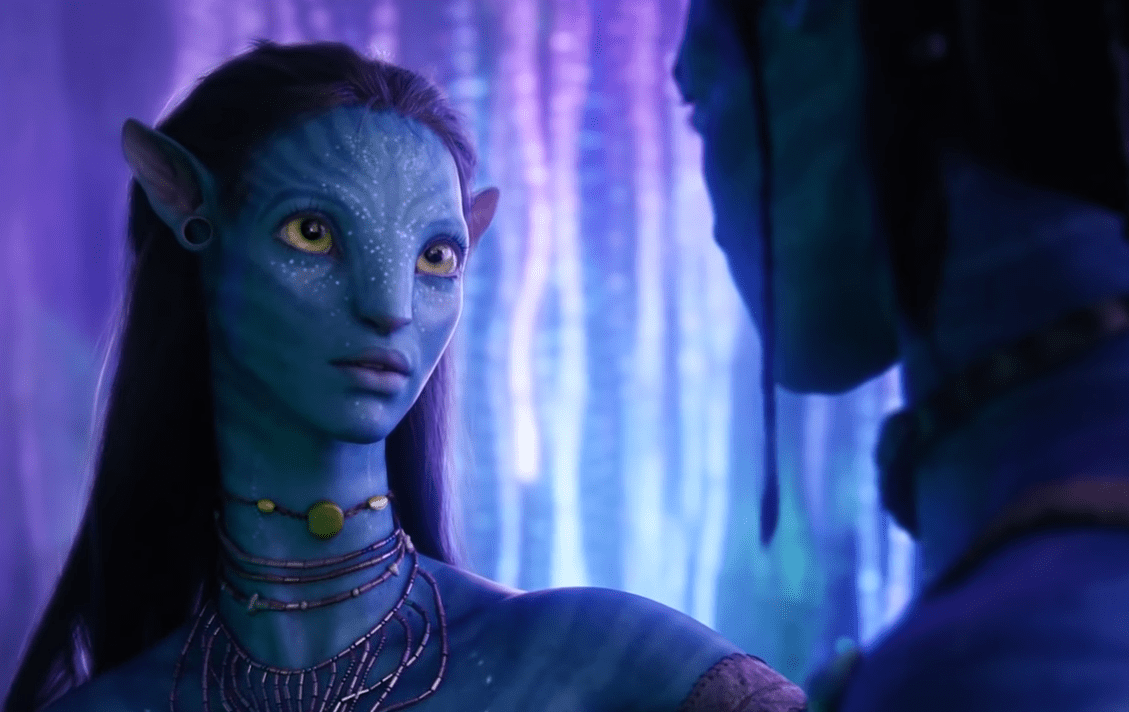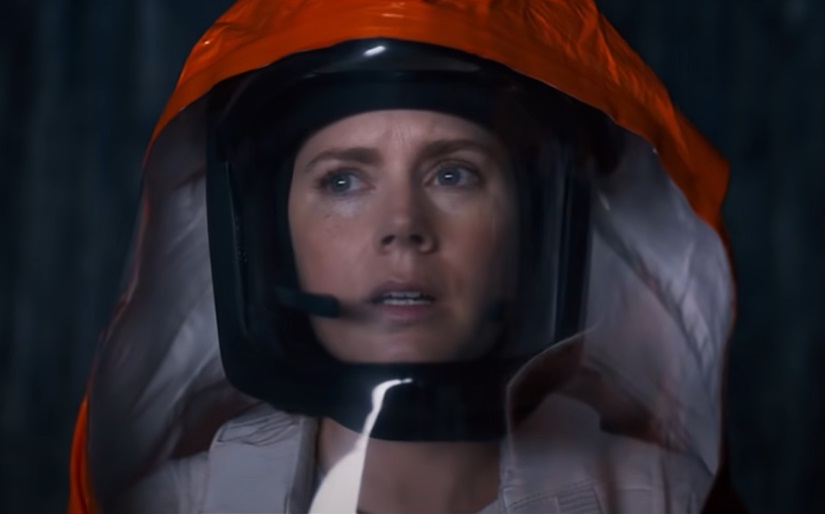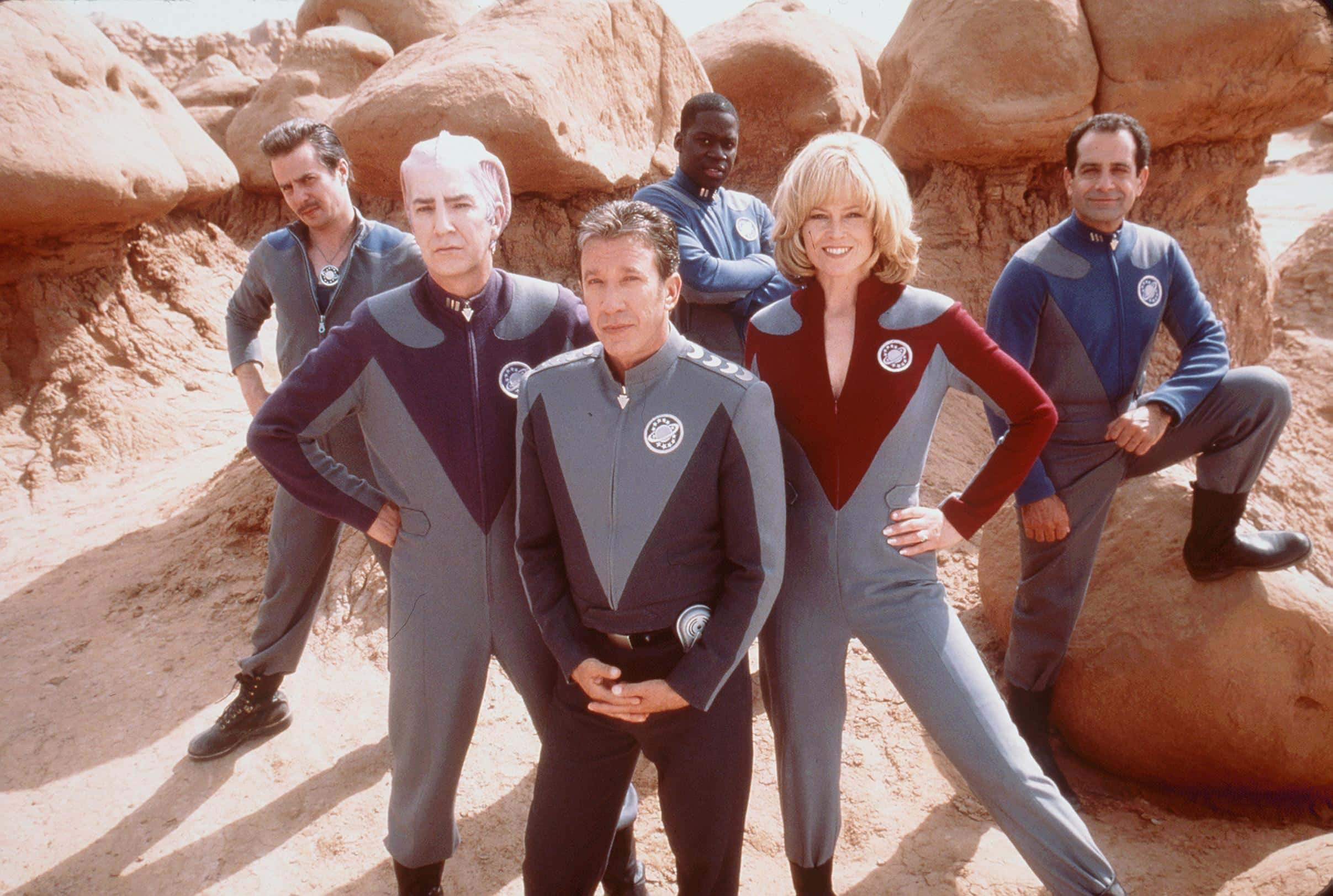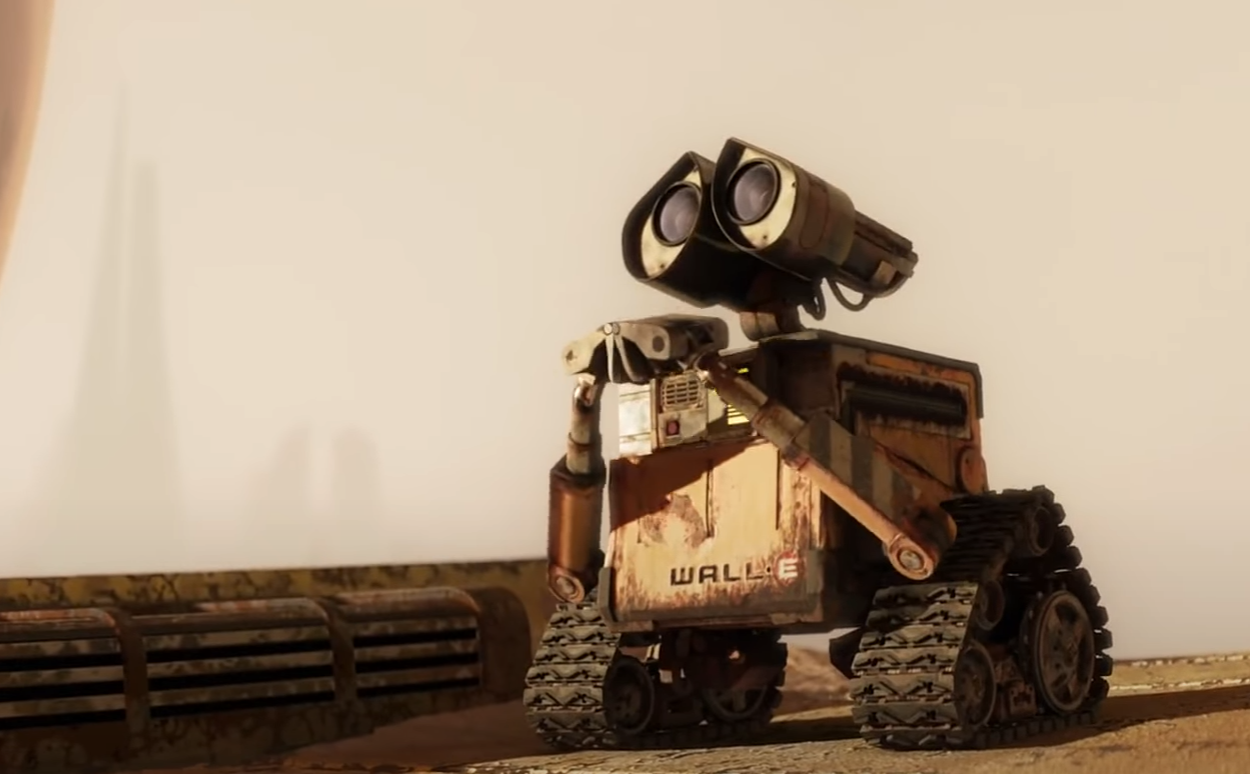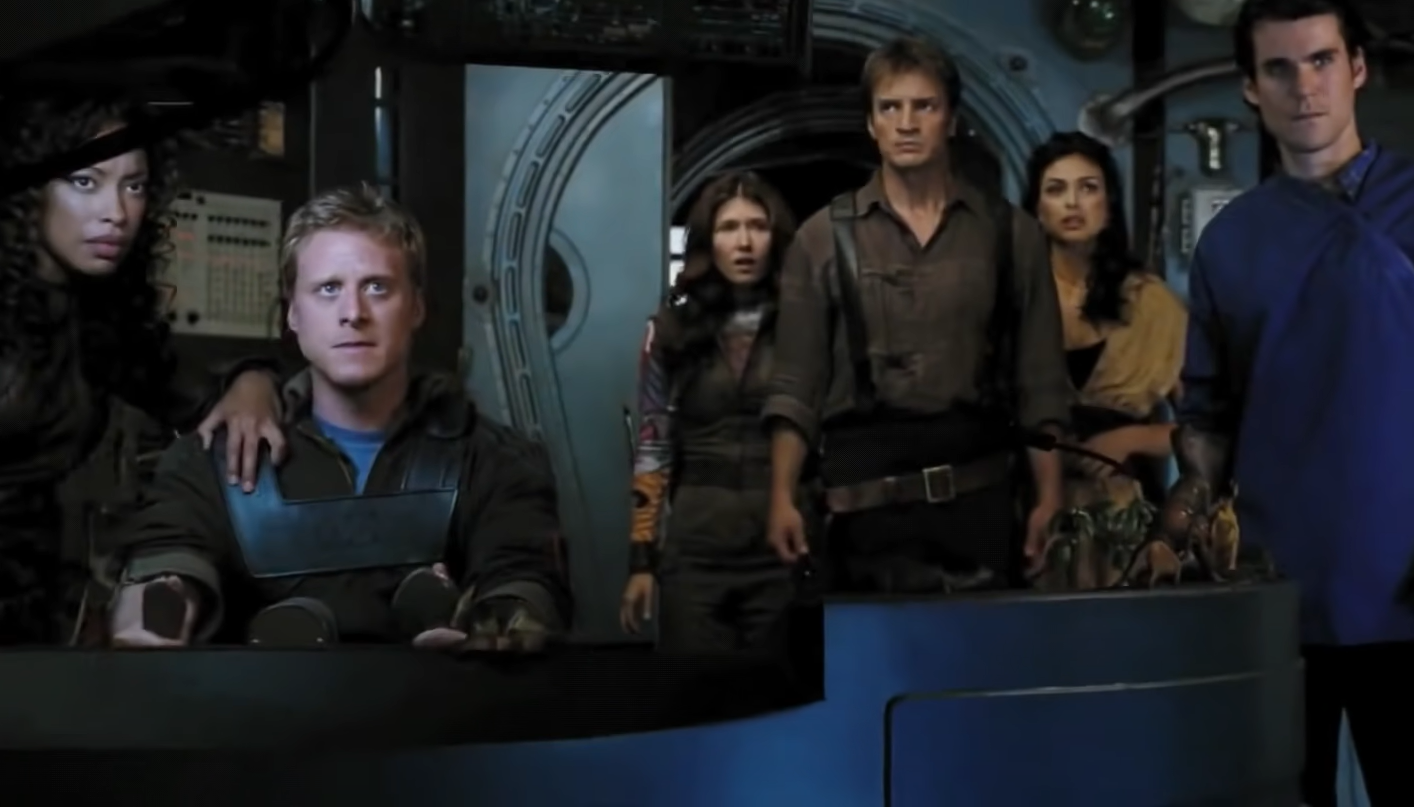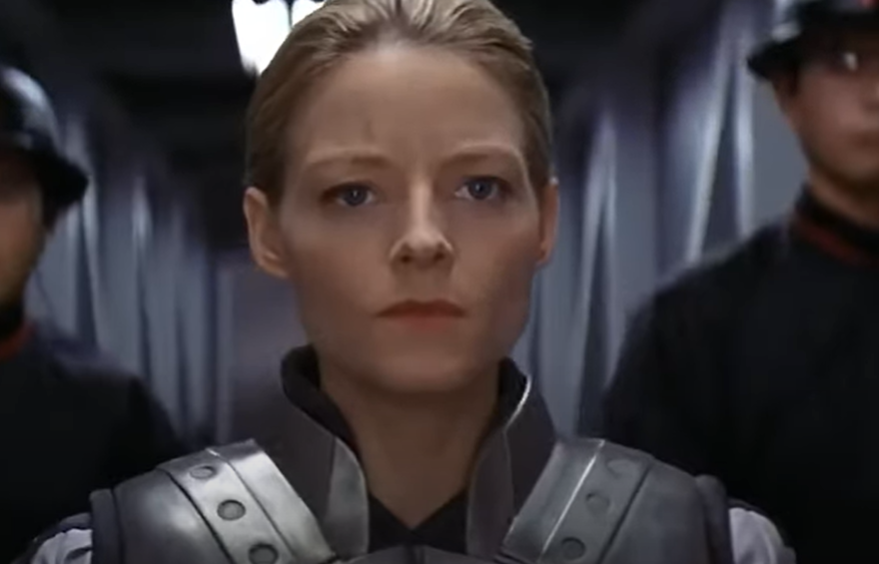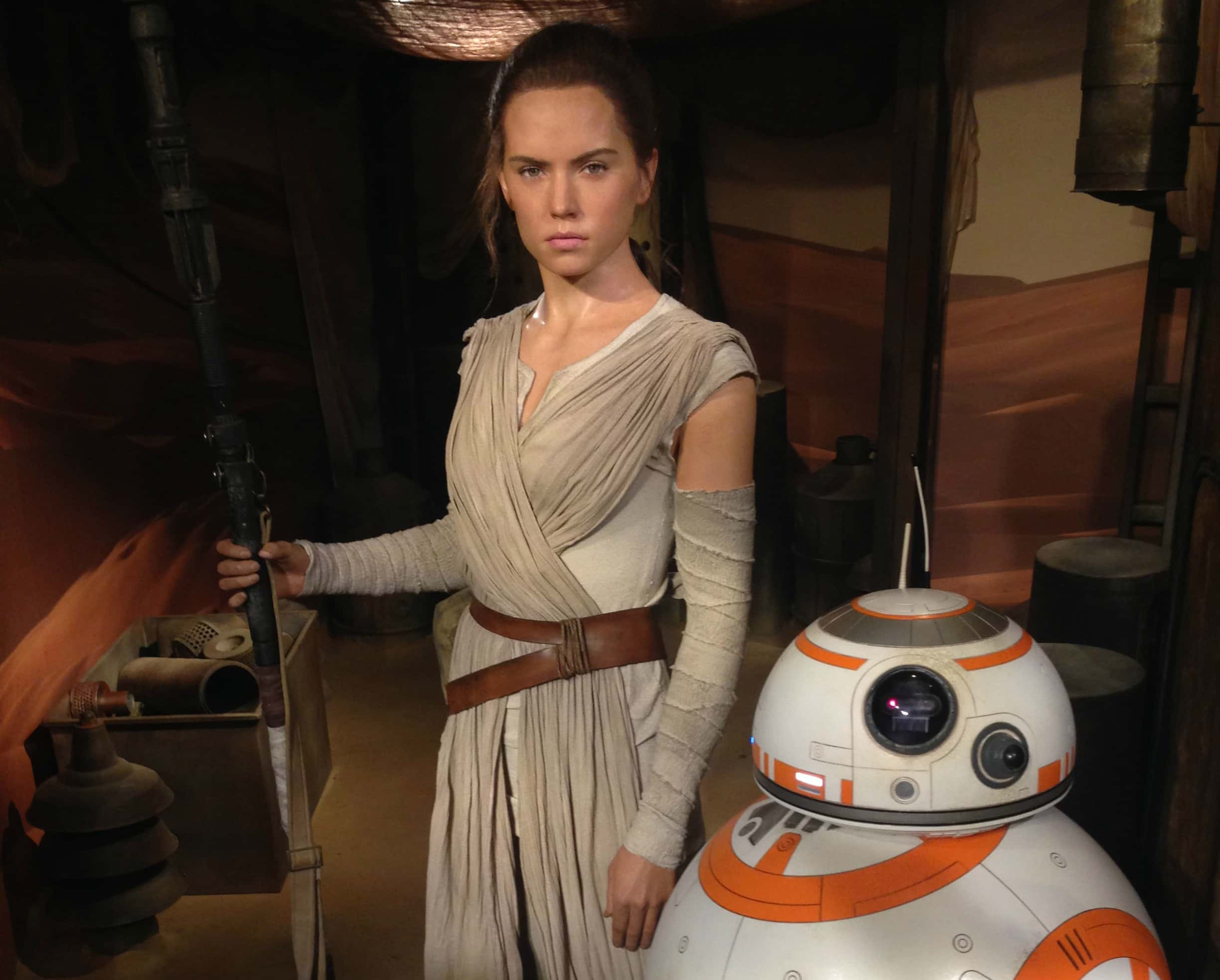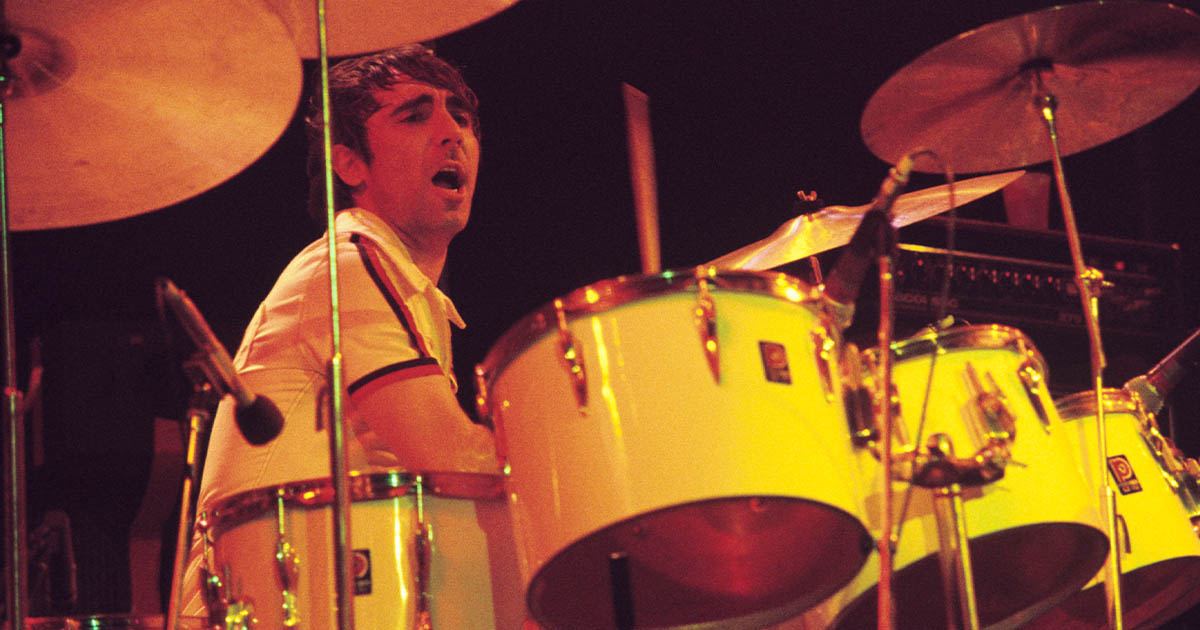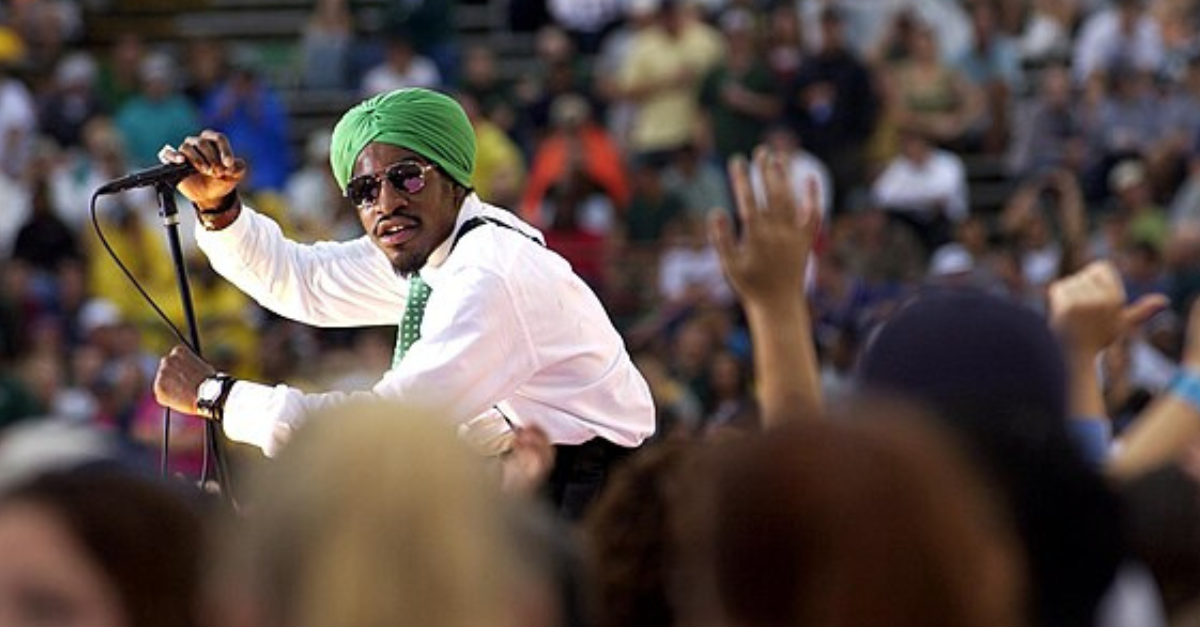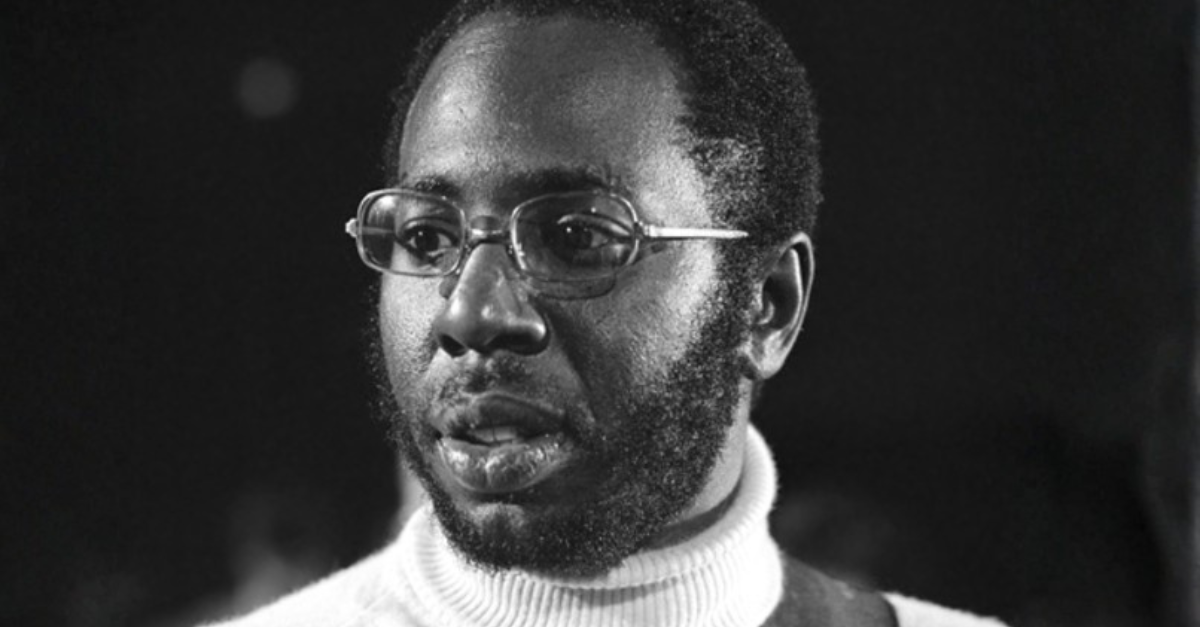Space Adventures
Space has always been the perfect canvas for humanity's boldest dreams and darkest fears. Luckily, movies about the stars take us into the unknown with raw emotion and thrilling cosmic adventures.

2001: A Space Odyssey (1968)
Stanley Kubrick's 1968 masterpiece was a whole new way of imagining space on screen. To create realistic visuals, Kubrick worked with NASA advisors, and the production famously pioneered rotating sets for zero-gravity scenes. The film's haunting silence in space set a new gold standard for realism.
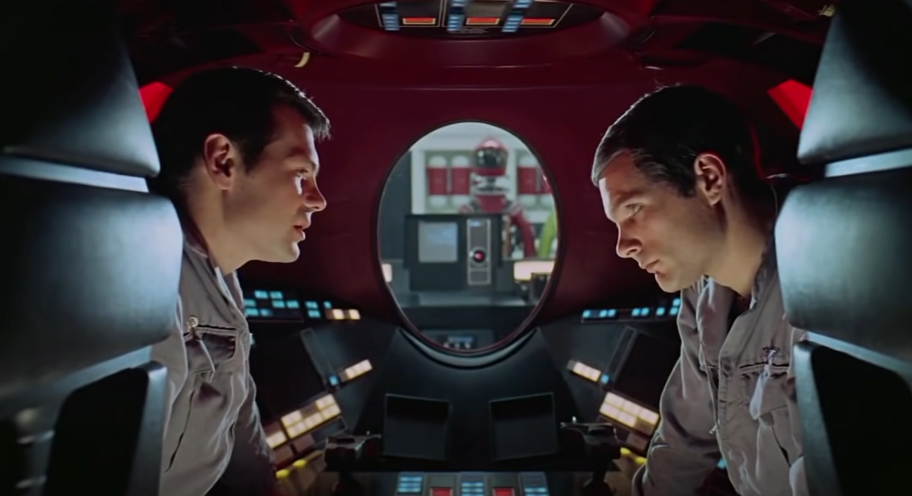 MGM Studios, 2001: A Space Odyssey
MGM Studios, 2001: A Space Odyssey
Star Wars: Episode IV - A New Hope (1977)
When George Lucas released A New Hope in 1977, few expected a galaxy of fans would form almost overnight. Fun fact: the original title was The Adventures of Luke Starkiller. Budget struggles meant the team had to invent new special effects techniques, which later launched the legendary company Industrial Light & Magic.
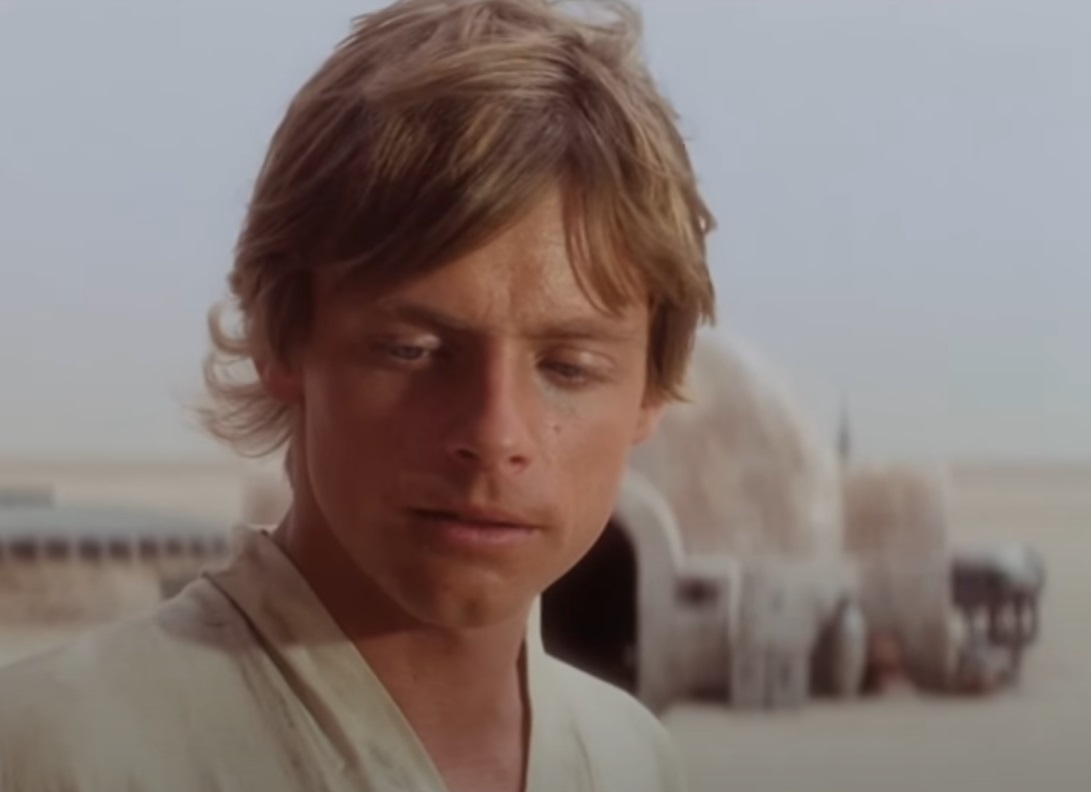 Twentieth Century, Star Wars: Episode IV – A New Hope (1977)
Twentieth Century, Star Wars: Episode IV – A New Hope (1977)
Interstellar (2014)
Nominated for 5 Oscars and winning one for Visual Effects, Interstellar has become one of the most popular space movies. Christopher Nolan brought physicist Kip Thorne on board as a scientific advisor. The visuals of black holes were so accurate that Thorne published scientific papers based on the film's imagery.
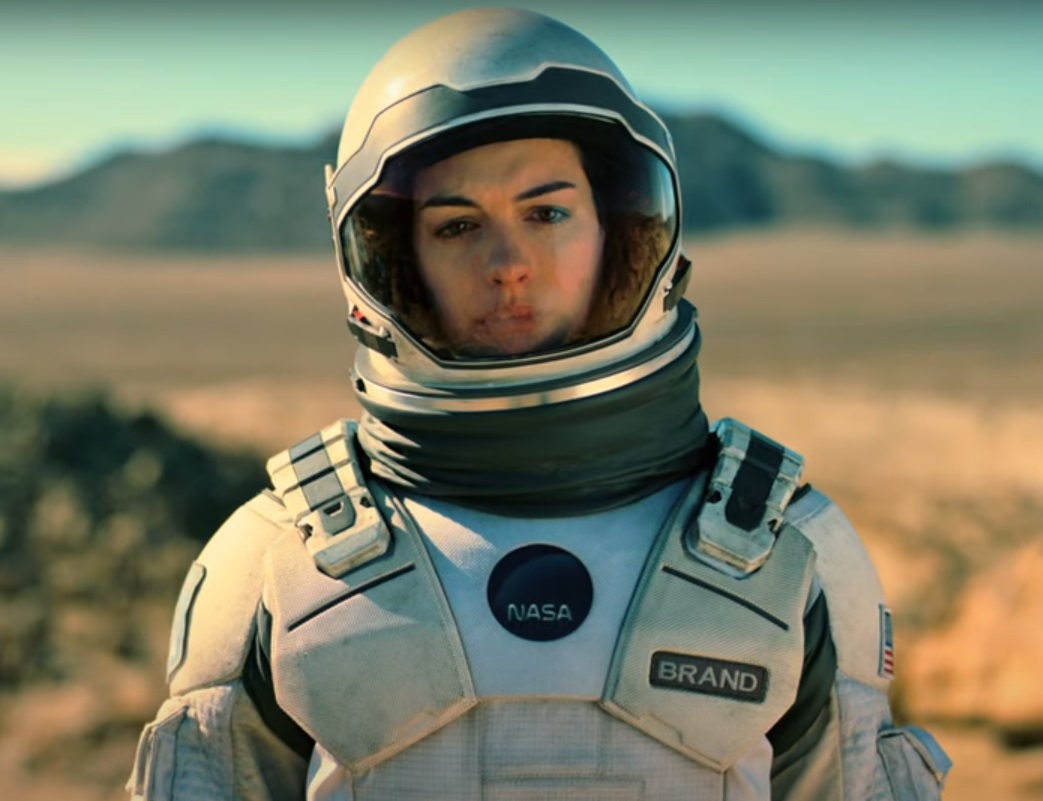 Paramount, Interstellar (2014)
Paramount, Interstellar (2014)
Alien (1979)
When it debuted in 1979, Alien fused horror with space exploration like nothing before. The terrifying Xenomorph design came from Swiss artist H R Giger's unsettling surrealist art. Sigourney Weaver's portrayal of Ripley also broke ground, becoming one of cinema's first true female action heroes.
Mr Nobody (2009)
A 118-year-old man reflects on his life where alternate realities and life choices collide. Starring Jared Leto, director Jaco Van Dormael structured the story like a puzzle, inviting viewers to explore infinite possibilities. Remarkably, much of the film's surreal imagery was achieved with practical effects rather than computer-generated visuals.
 Mr. Nobody (2009, Jaco Van Dormael) by Cinefilissimo
Mr. Nobody (2009, Jaco Van Dormael) by Cinefilissimo
Apollo 13 (1995)
Based on true events, Apollo 13 brought Ron Howard, Tom Hanks, Kevin Bacon, and Bill Paxton together for a nerve-racking journey. To mimic weightlessness, the crew filmed scenes aboard NASA's "Vomit Comet," a reduced-gravity aircraft. The film's quiet, realistic tension captured the spirit of human ingenuity against the vast void.
Gravity (2013)
Alfonso Cuaron spent four years perfecting Gravity. His efforts paid off as the movie was nominated for 10 Academy Awards, winning 7. Sandra Bullock trained in a custom lightbox to simulate the harsh lighting conditions of space. The film's groundbreaking, unbroken 17-minute opening shot changed the way we experience isolation.
Solaris (1972)
Solaris traded flashy space battles for something deeper: a slow meditation on grief and human consciousness. Shot during the Cold War, the film subtly critiques Soviet society while unfolding a personal story. Its dreamlike pacing and haunting visuals influenced generations of filmmakers who sought meaning beyond spectacle.
 Solaris (1972) Trailer HD | Natalya Bondarchuk | Donatas Banionis by Film Trailer Channel
Solaris (1972) Trailer HD | Natalya Bondarchuk | Donatas Banionis by Film Trailer Channel
Close Encounters Of The Third Kind (1977)
Steven Spielberg insisted on keeping the alien designs in Close Encounters a mystery during production. Practical effects blended with clever lighting tricks made the final reveal unforgettable. Spielberg even recruited real-life scientists to advise on the film's portrayal of first contact, lending authenticity to one of cinema's most hopeful visions.
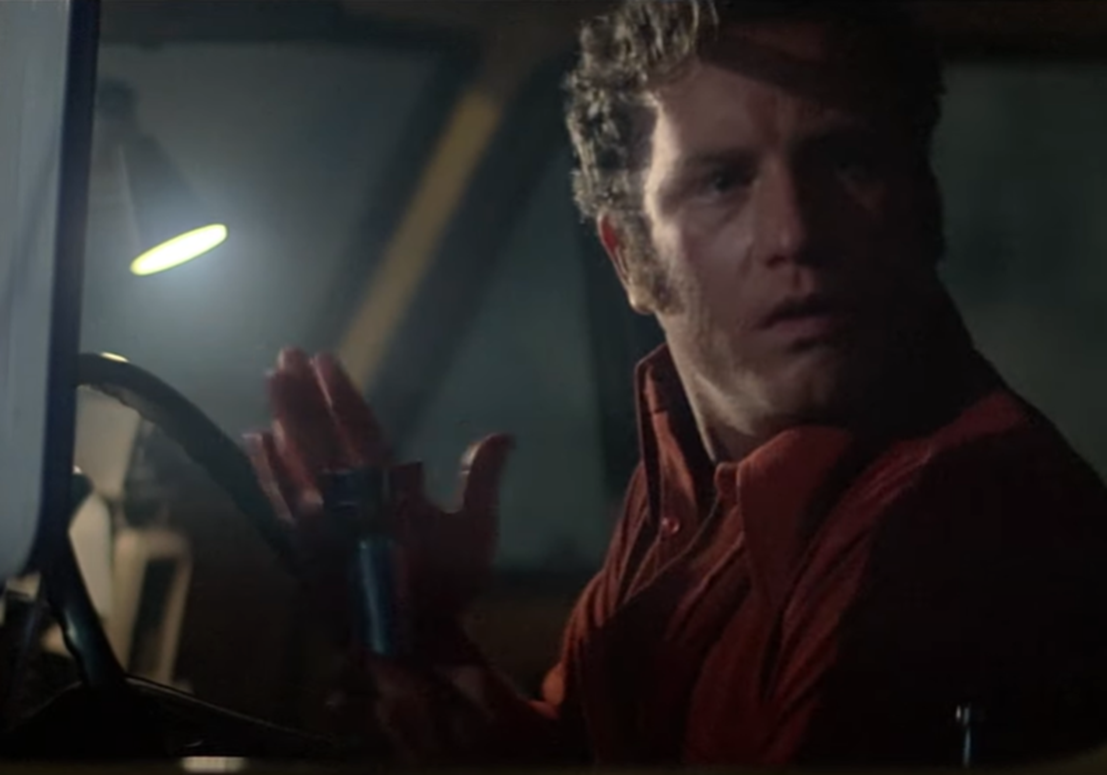 EMI Films, Close Encounters of the Third Kind (1977)
EMI Films, Close Encounters of the Third Kind (1977)
The Right Stuff (1983)
It wasn't just about spaceflight. The Right Stuff captured the mythic aura surrounding America's first astronauts. Filming inside actual military aircraft gave the story an unmatched authenticity. Sam Shepard's portrayal of Chuck Yeager added a rugged, adventurous spirit to a movie that helped revive interest in real-world space heroes.
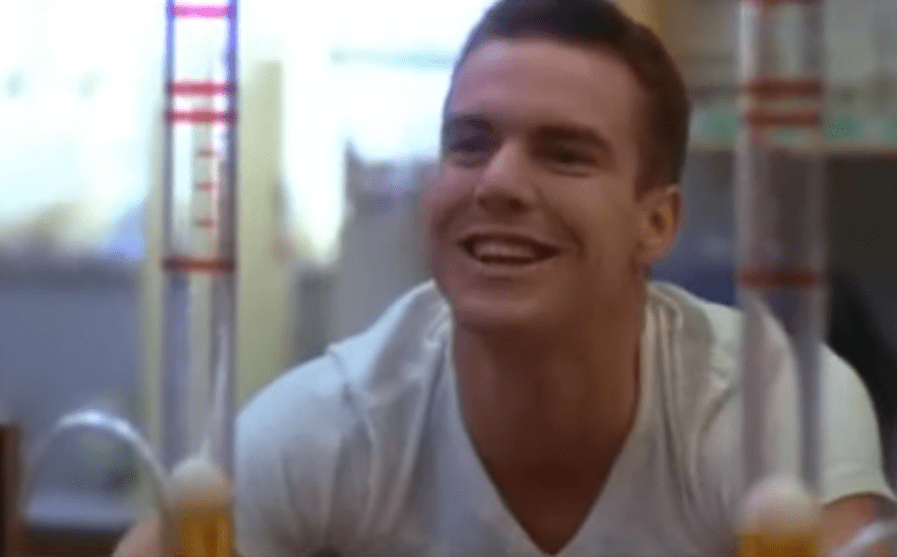 The Right Stuff (1983), Warner Bros. Pictures
The Right Stuff (1983), Warner Bros. Pictures
Avatar (2009)
Exploration of a distant alien moon becomes a battle for survival and belonging in James Cameron’s Avatar. Sam Worthington stars as a paraplegic Marine who bonds with the Na’vi. Stunning 3D visuals and Pandora’s dazzling bioluminescence redefined science fiction cinema and pushed the boundaries of visual storytelling.
Arrival (2016)
With a unique approach, Arrival steered away from explosive alien encounters and leaned into quiet communication. The language of the heptapods, with its circular symbols, was carefully crafted by linguists and artists to look believable. Amy Adams' layered performance brought emotional gravity to a story that questioned how we perceive time.
The Martian (2015)
Ridley Scott delivered one of the most optimistic takes on space survival in The Martian. Matt Damon's portrayal of Mark Watney turned a potentially grim story into an inspiring adventure. NASA even praised the film for its realistic depiction of science under pressure, and astronaut trainees now study it for lessons.
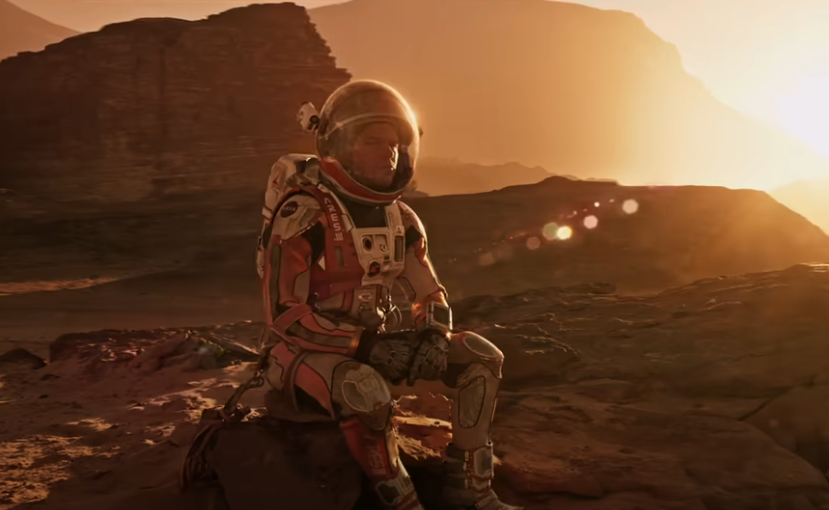 Twentieth Century, The Martian (2015)
Twentieth Century, The Martian (2015)
Ad Astra (2019)
Ad Astra blended cosmic exploration with deep psychological introspection. Brad Pitt's understated performance as a haunted astronaut searching for his father elevated the film's emotional core. Interestingly, James Gray aimed for unprecedented realism, collaborating with space agencies to ensure the spacecraft interiors and moon travel scenes felt authentically plausible.
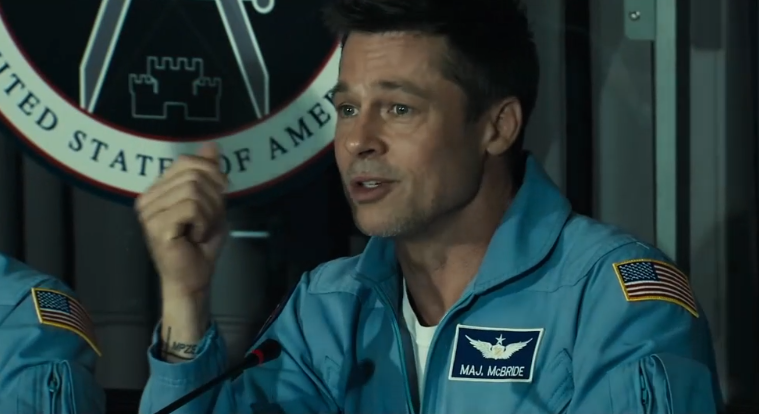 20th Century Studios, Ad Astra (2019)
20th Century Studios, Ad Astra (2019)
Dune: Part One (2021)
Based on a novel, Dune: Part One succeeded where others failed, finally bringing Frank Herbert's intricate universe to life. The colossal sandworms were created using a combination of visual effects and practical sound design, mimicking low-frequency natural sounds like earthquakes. The film won six Oscars.
 Dune: Part 1 RECAP by Man of Recaps
Dune: Part 1 RECAP by Man of Recaps
First Man (2018)
Featuring the silent terror of space travel, Damien Chazelle filmed First Man using handheld cameras and natural lighting for intense realism. Ryan Gosling's portrayal of Neil Armstrong focused on personal grief more than heroism. To recreate the moon landing, the crew used massive LED screens instead of green screens.
 First Man - Official Trailer #2 [HD] by Universal Pictures
First Man - Official Trailer #2 [HD] by Universal Pictures
Moon (2009)
Long before space movies returned to gritty realism, Duncan Jones built miniature models for the Moon to achieve an old-school, textured look. Sam Rockwell handled multiple versions of his character across a lonely lunar base and earned praise for one of the most layered solo performances in modern science fiction.
 🎥 MOON (2009) | Movie Trailer | Full HD | 1080p by MOVIE PREDICTOR
🎥 MOON (2009) | Movie Trailer | Full HD | 1080p by MOVIE PREDICTOR
Annihilation (2018)
What happens when plants and animals start mutating? Shape-shifting settings and biological wonders defined Annihilation's unsettling world. Director Alex Garland pushed for real set designs with digital effects to create places that looked beautiful and decayed. The film stars Natalie Portman and Jennifer Jason Leigh.
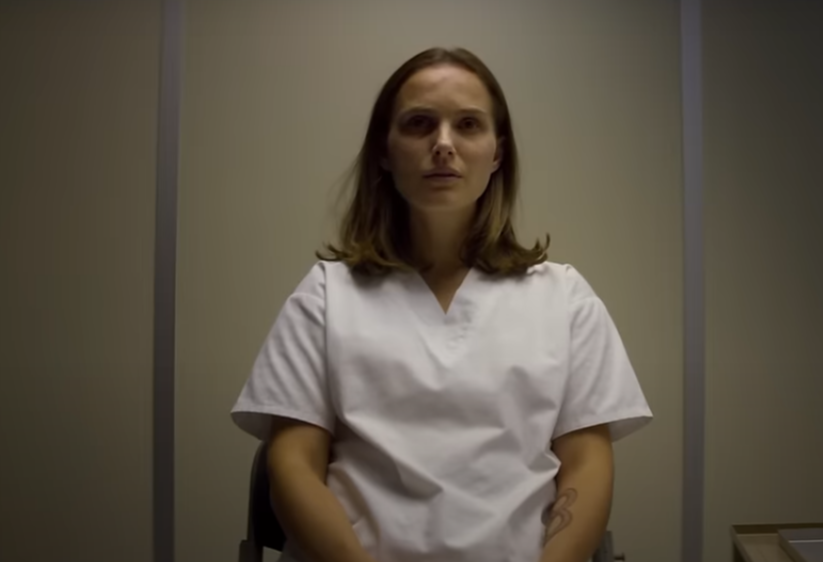 Paramount, Annihilation (2018)
Paramount, Annihilation (2018)
The Midnight Sky (2020)
Survival on a dying Earth met survival aboard a distant spacecraft in George Clooney's reflective drama. Shooting Arctic sequences on location at -40°F, rather than faking them, gave every scene a breath-stealing authenticity. Clooney's dual role as director and star anchored the story with quiet melancholy and striking visuals.
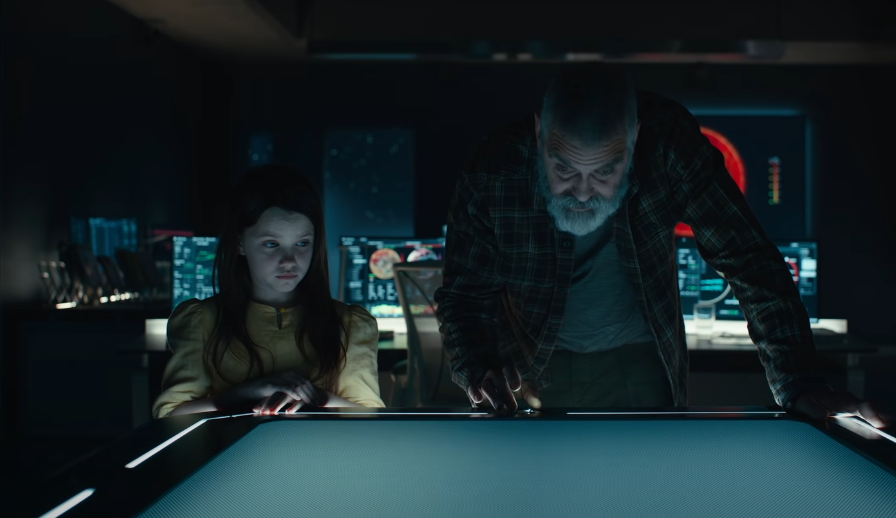 Anonymous Content, The Midnight Sky (2020)
Anonymous Content, The Midnight Sky (2020)
Galaxy Quest (1999)
What began as a clever satire of sci-fi fandom grew into a beloved classic. Tim Allen, Sigourney Weaver, and Alan Rickman played washed-up actors pulled into a real space adventure. The film's genuine affection for its genre roots struck a chord, making it a surprise favorite among Star Trek fans.
Guardians Of The Galaxy (2014)
A talking raccoon and a sentient tree became unlikely pop culture icons. The universe needed a team of space heroes to fight the villains and save the galaxy. For his role, Vin Diesel recorded his lines in different languages so his distinctive voice could be used around the world.
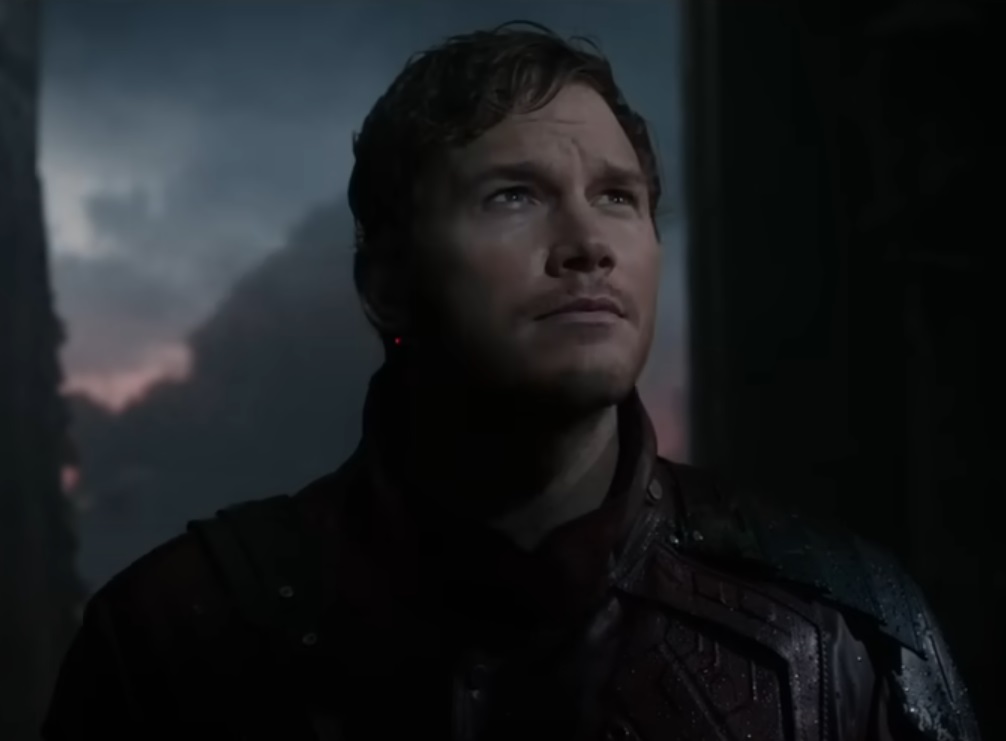 Marvel, Guardians of the Galaxy (2014)
Marvel, Guardians of the Galaxy (2014)
The Last Starfighter (1984)
Before modern blockbusters relied heavily on CGI, this 1984 cult classic dared to fill its climactic space battles entirely with computer-generated imagery. Though primitive by today's standards, the effects were groundbreaking. The movie also captured the era's fascination with arcade culture by blending real-world gaming dreams with interstellar fantasy.
The Hitchhiker's Guide To The Galaxy (2005)
Absurdity and cosmic chaos combine when an ordinary man survives Earth’s destruction and joins a galactic misadventure. Sam Rockwell and Zooey Deschanel lead the whimsical journey. The film stayed true to Douglas Adams’ dry humor, including the legendary answer to life’s mysteries: 42—without anyone knowing the actual question.
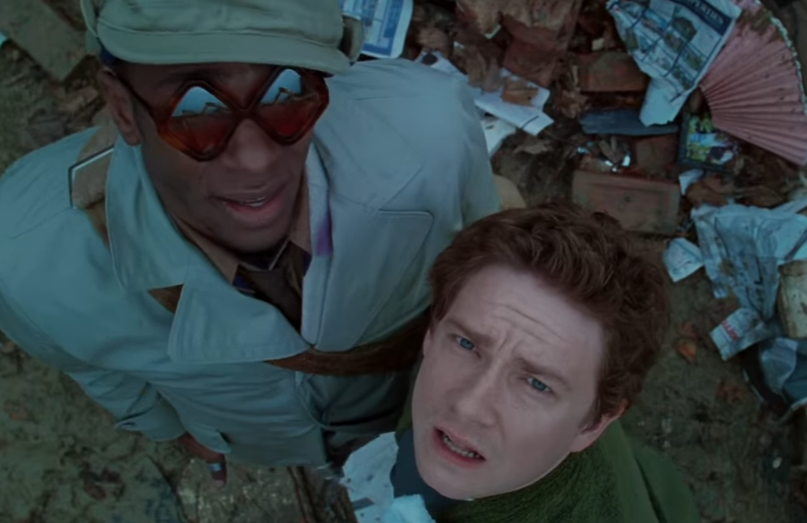 Touchstone, The Hitchhiker's Guide to the Galaxy (2005)
Touchstone, The Hitchhiker's Guide to the Galaxy (2005)
WALL-E (2008)
Audiences fell in love with WALL-E through pure animation mastery. Pixar animators studied silent film legends like Buster Keaton to imbue every mechanical gesture with emotion. Interestingly, real NASA footage influenced the film's depiction of Earth's abandonment and humanity's struggle to reclaim its lost spirit.
Oblivion (2013)
Starring Tom Cruise and Morgan Freeman, Oblivion tackles what Earth would be like after long wars with aliens. Director Joseph Kosinski filmed Iceland's haunting terrains to double as post-apocalyptic Earth. Visuals leaned heavily on practical effects, including building massive sky-tower sets surrounded by giant projection screens.
 Oblivion Official Trailer #1 Tom Cruise Sci-Fi Movie HD by Rotten Tomatoes Trailers
Oblivion Official Trailer #1 Tom Cruise Sci-Fi Movie HD by Rotten Tomatoes Trailers
Jupiter Ascending (2015)
Ambitious world-building took center stage in the Wachowskis' cosmic opera. Mila Kunis and Channing Tatum anchored a story brimming with genetic dynasties and sprawling galactic politics. Despite polarized reviews due to the confusing narrative, the film's costume designs, especially for elaborate royal houses, earned widespread praise.
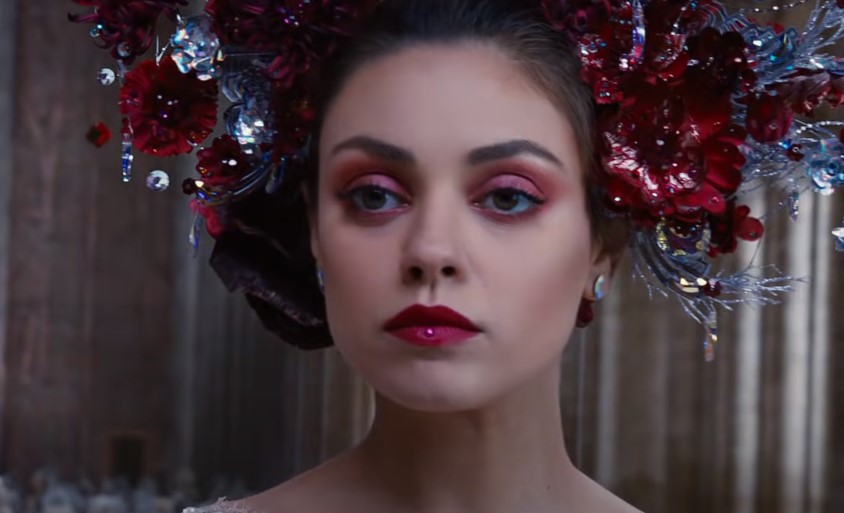 Warner Bros., Jupiter Ascending (2015)
Warner Bros., Jupiter Ascending (2015)
Serenity (2005)
Fans of the short-lived series Firefly finally received closure with this thrilling space western. Director Joss Whedon reunited the original cast, adding sharp humor to the darker themes. Budget constraints led to innovative set recycling; for example, Serenity's ship interior was built as a single, interconnected set to enhance authenticity.
The Empire Strikes Back (1980)
Often hailed as the crown jewel of the Star Wars saga, The Empire Strikes Back almost didn't happen the way we know it. Lucas self-financed the sequel to maintain creative control. This risky move paid off by delivering unforgettable moments like Yoda's debut and Darth Vader revealing he's Luke Skywalker's father.
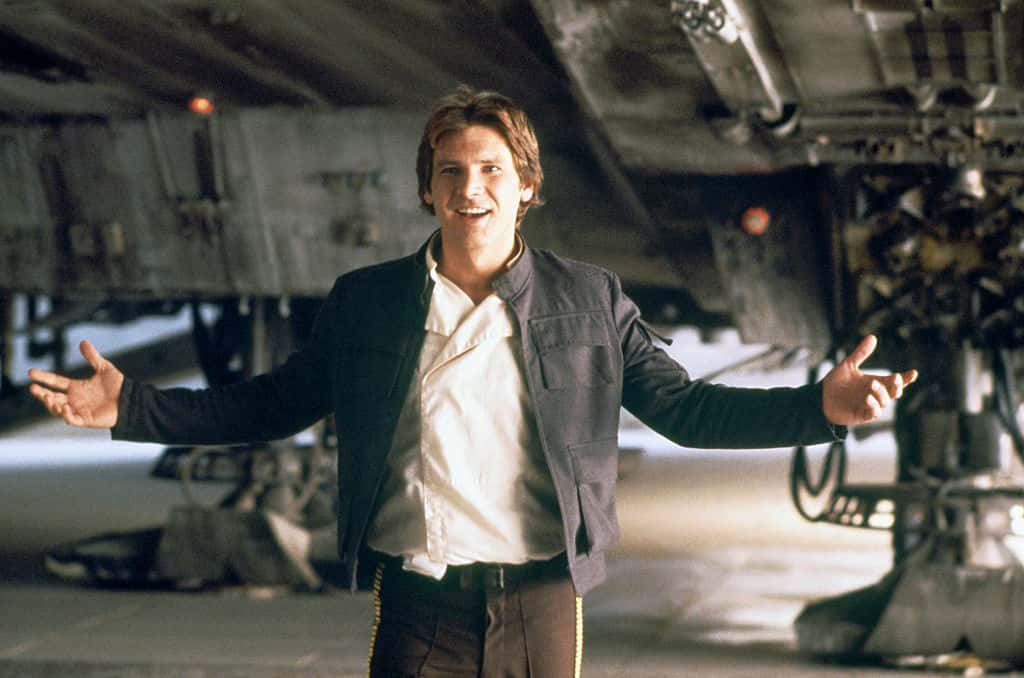 Sunset Boulevard, Getty Images
Sunset Boulevard, Getty Images
War Of The Worlds (2005)
Steven Spielberg's adaptation of H G Wells' classic novel emphasized intimate survival over grand heroics. Tom Cruise and Dakota Fanning carried the human drama amid the alien chaos. Special effects teams incorporated real military hardware and practical explosions to portray the otherworldly invasion with a gritty realism.
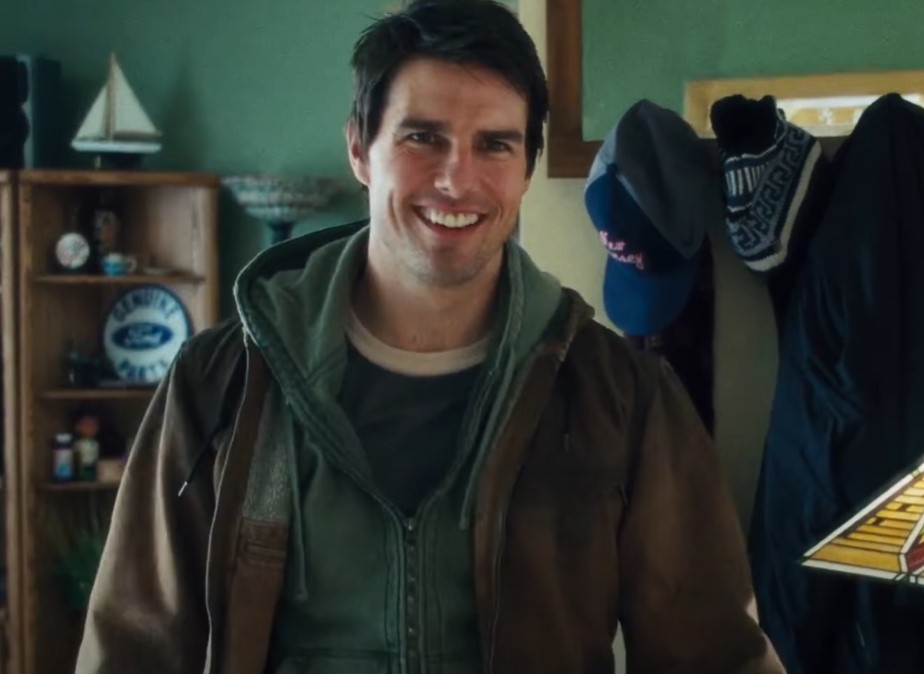 Paramount, War of the Worlds (2005)
Paramount, War of the Worlds (2005)
Guardians Of The Galaxy Vol. 2 (2017)
Family and redemption unfolded across a kaleidoscope of planets in this colorful sequel. Practical sets for Ego's homeworld were built to make scenes feel tangible rather than digital. One surprising touch: Kurt Russell's youthful look in the opening flashback was achieved almost entirely with makeup rather than digital de-aging.
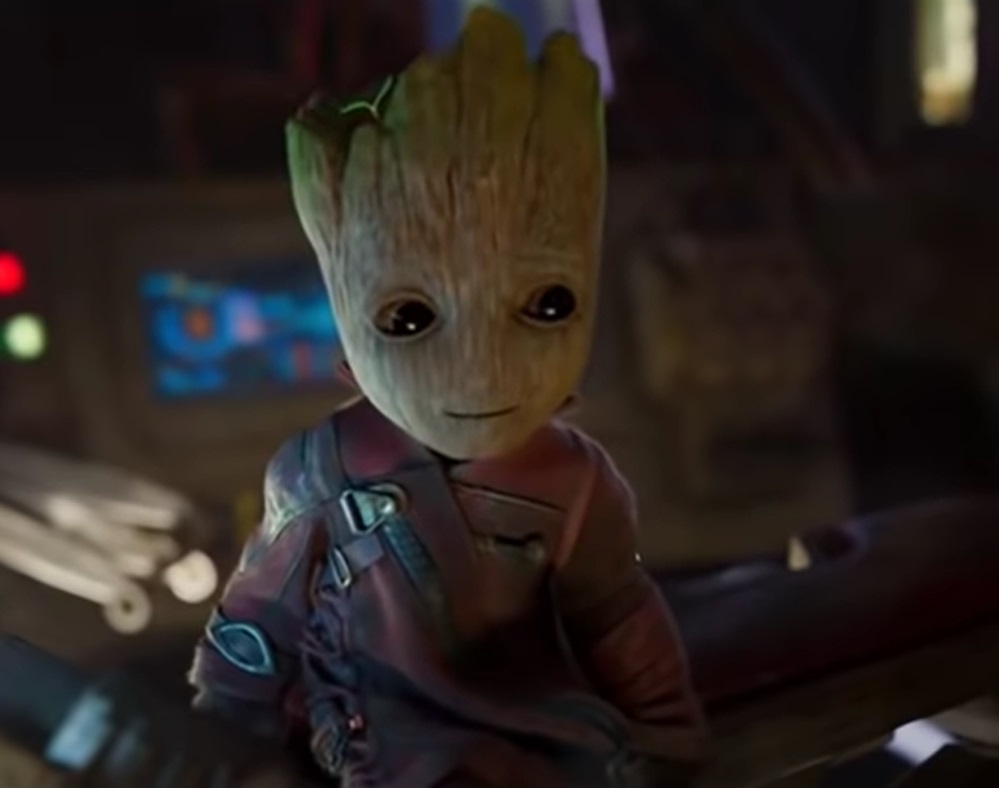 Marvel, Guardians of the Galaxy Vol. 2 (2017)
Marvel, Guardians of the Galaxy Vol. 2 (2017)
Contact (1997)
A real-life inspiration shaped Jodie Foster's portrayal of Dr Ellie Arroway and famous astronomer Jill Tarter advised her throughout production. Directed by Robert Zemeckis, Contact handled alien communication with rare sensitivity. Clever visual storytelling, like the mirror shot sequence, remains one of the most talked-about technical achievements in movie editing.
Star Wars: The Force Awakens (2015)
Instead of relying heavily on CGI, J J Abrams returned to handcrafted effects when reviving the Star Wars saga. A full-sized Millennium Falcon was rebuilt from scratch, and physical props like Rey's speeder were constructed for real-world filming. This commitment helped bridge the beloved original trilogy with a bold new generation.
Europa Report (2013)
Minimalist realism distinguished this tense space mission thriller. Instead of sweeping heroics, Europa Report presented a documentary-style narrative with found footage techniques. The production team worked closely with scientists to base Europa's icy surface on actual research for a chillingly plausible vision of first contact on Jupiter's frozen moon.
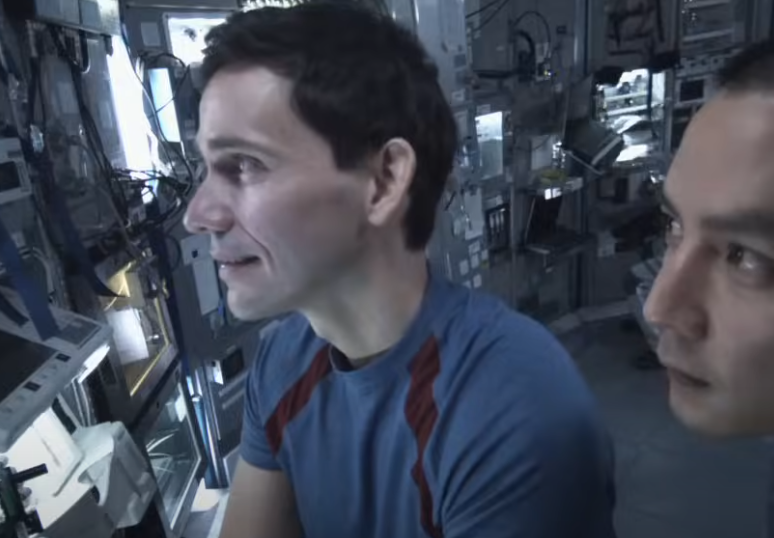 Wayfare Entertainment, Europa Report (2013)
Wayfare Entertainment, Europa Report (2013)
Sphere (1998)
What if aliens aren't where we expect them to be? Mystery and psychological exposure took center stage beneath the Pacific Ocean rather than in open space. Sphere gathered an all-star cast, including Dustin Hoffman, Sharon Stone, Queen Latifah, and Samuel L Jackson.
 Sphere (1998) Official HD Trailer by DeFilmBlog
Sphere (1998) Official HD Trailer by DeFilmBlog
Passengers (2016)
Casting Jennifer Lawrence and Chris Pratt gave Passengers immediate star power, but production design stole the show. The luxurious spaceship Avalon was inspired by cruise ships and five-star hotels. Rather than relying only on green screens, many of the ship's stunning interiors were physically built.
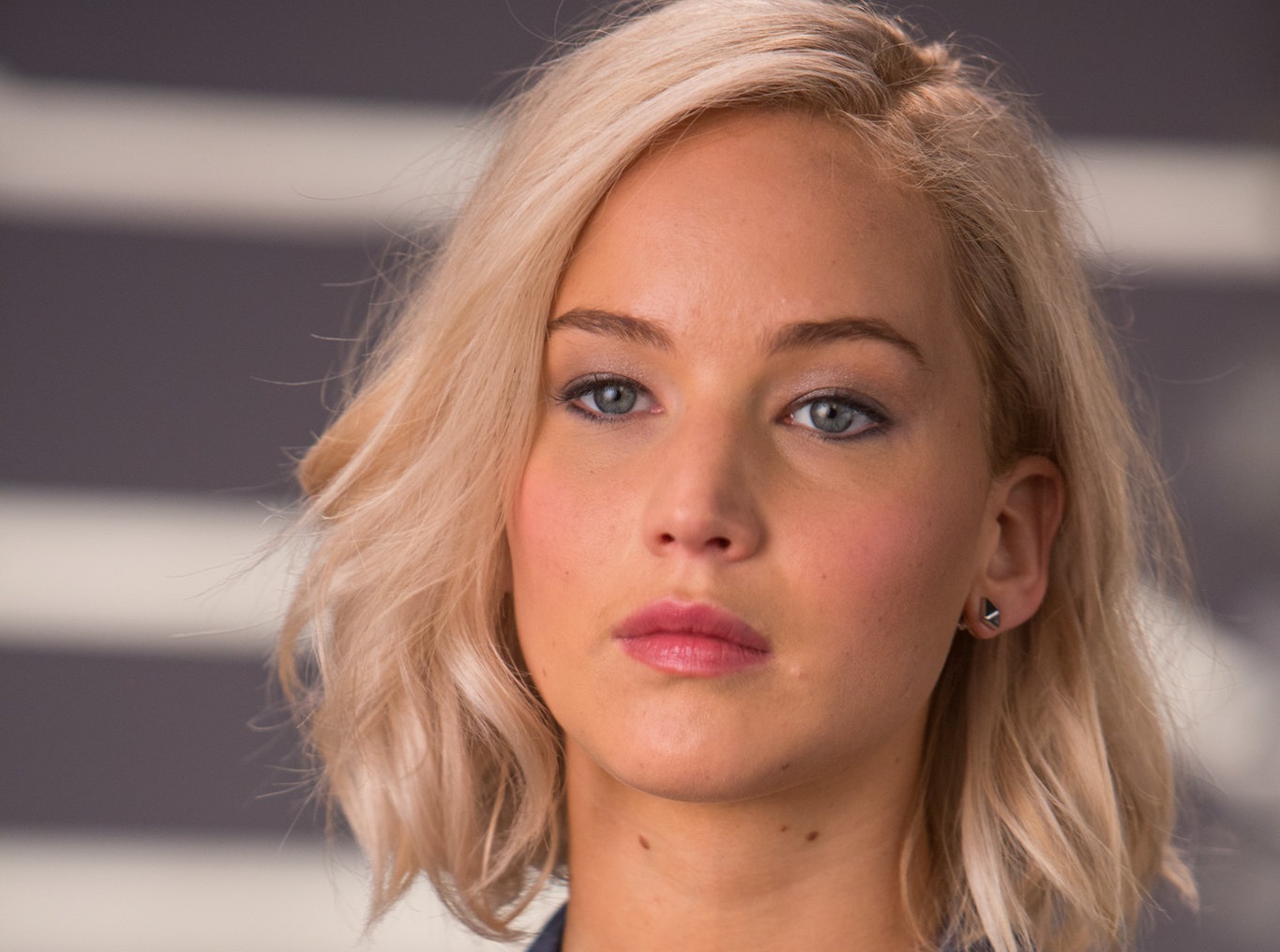 Jennifer Lawrence Films, Flickr
Jennifer Lawrence Films, Flickr
The Fountain (2006)
The Fountain features death and rebirth intertwined across centuries in Darren Aronofsky's visually ambitious project. Instead of computer-generated space sequences, the team filmed chemical reactions under a microscope to create cosmic imagery. Hugh Jackman and Rachel Weisz's performances made even the most abstract moments feel intimate.
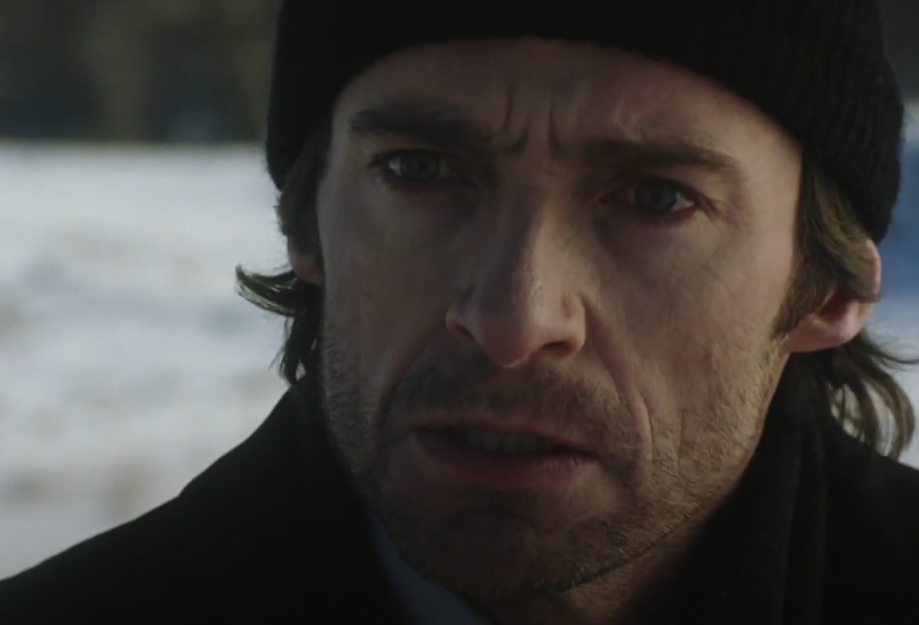 Warner Bros., The Fountain (2006)
Warner Bros., The Fountain (2006)
Another Earth (2011)
A second Earth appearing in the sky became a quiet metaphor for redemption in this indie gem. Brit Marling co-wrote and starred in the film, shot on a shoestring budget. Director Mike Cahill often used guerrilla-style techniques, even crashing real parties to capture authentic footage without the burden of expensive sets.
 Another Earth (2011) Movie Trailer by Rotten Tomatoes Trailers
Another Earth (2011) Movie Trailer by Rotten Tomatoes Trailers
Life (2017)
Fear of the unknown takes center stage as a microscopic organism from Mars wreaks havoc aboard the International Space Station. Director Daniel Espinosa insisted on tightly choreographed zero-gravity scenes, using wirework and careful camera movement. The unsettling creature, Calvin, was designed to evolve realistically, starting from a simple single-cell organism.
 LIFE - Official Trailer #2 (HD) by Sony Pictures Entertainment
LIFE - Official Trailer #2 (HD) by Sony Pictures Entertainment
Pitch Black (2000)
Vin Diesel's breakout role as antihero Riddick almost didn't happen because another actor was originally cast before. Filmed in Australia's Outback, the harsh lighting and inverted color palette created the planet's eerie daylight. The movie's blend of survival thriller and sci-fi horror became a surprising cult success.
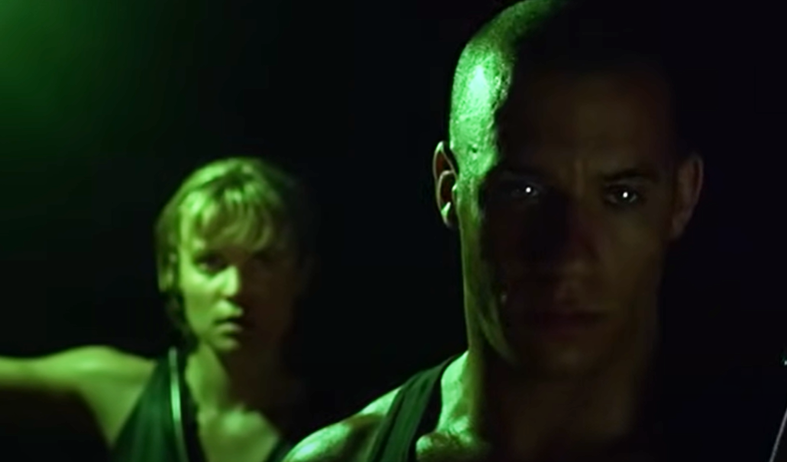 Interscope Communications, Pitch Black (2000)
Interscope Communications, Pitch Black (2000)
Prometheus (2012)
Prometheus explored the origins of life itself. Ridley Scott returned to the Alien universe with a philosophical twist. The stunning alien settings were largely real sets built inside massive soundstages to minimize green screen reliance. Michael Fassbender's portrayal of David, the unsettling android, remains one of the film's most praised achievements.
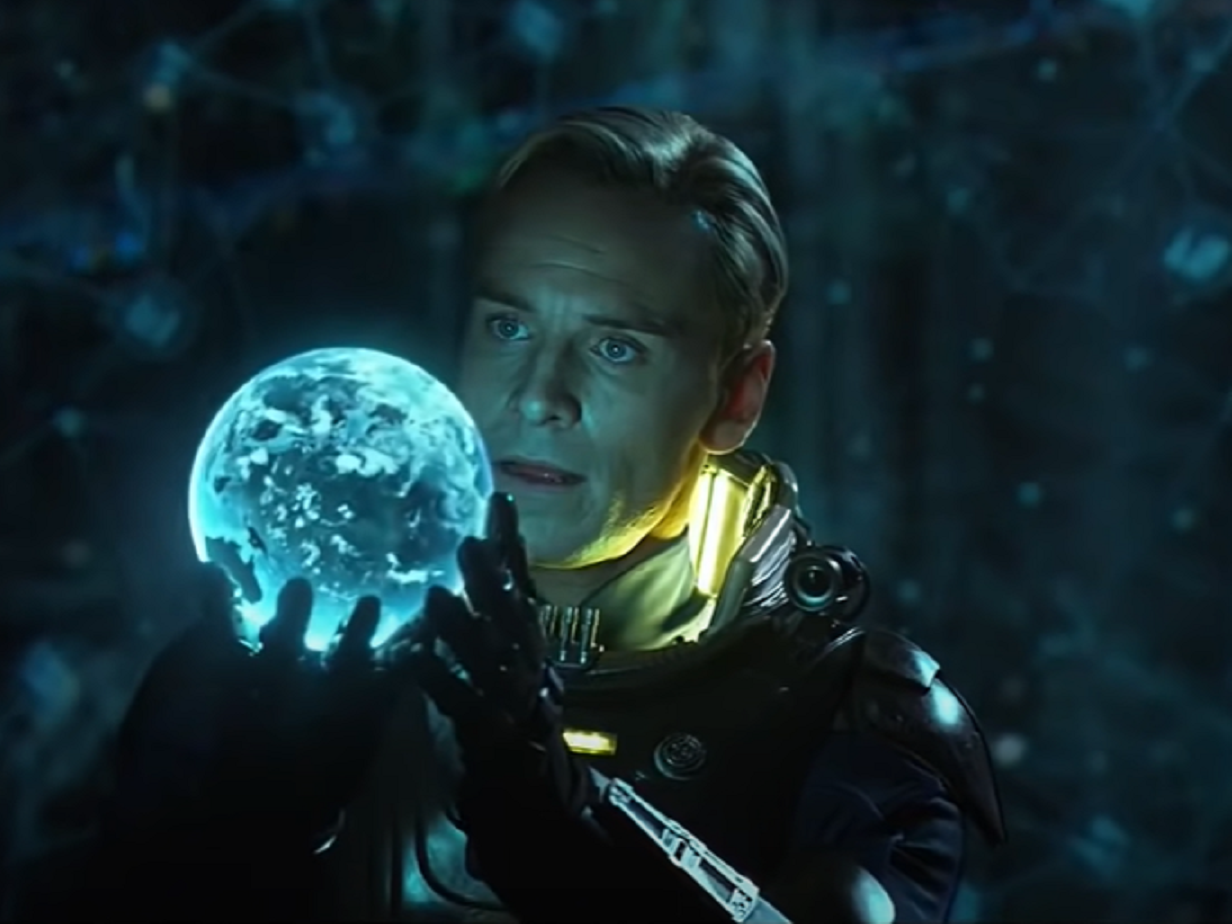 Twentieth Century, Prometheus (2012)
Twentieth Century, Prometheus (2012)
Stargate (1994)
A mysterious portal discovered on Earth unlocks a passage to a distant world in Roland Emmerich’s Stargate. Kurt Russell and James Spader lead the expedition by mixing ancient myths with interstellar science fiction. Practical effects and vast deserts gave the alien planet a grounded, realistic texture that fascinated audiences worldwide.
 STARGATE (1994) | Activating The Portal | MGM by Amazon MGM Studios
STARGATE (1994) | Activating The Portal | MGM by Amazon MGM Studios
The Cloverfield Paradox (2018)
Released unexpectedly on Netflix right after the Super Bowl, this third entry in the Cloverfield anthology experimented with marketing like no film before it. The story's chaotic multiverse blending confused some viewers, but the inventive use of zero-gravity filming rigs and practical creature effects kept the visual energy high.
 THE CLOVERFIELD PARADOX | WATCH NOW | NETFLIX by Netflix
THE CLOVERFIELD PARADOX | WATCH NOW | NETFLIX by Netflix
Silent Running (1972)
Long before eco-conscious sci-fi became mainstream, Silent Running imagined a future where Earth's last forests survive in space. Director Douglas Trumbull, who worked on 2001: A Space Odyssey, used innovative miniatures and in-camera effects. The adorable drones Huey, Dewey, and Louie were operated by amputee actors inside tiny costumes.
 Silent Running - (1972) - Rejoice In The Sun Scene (1/10) | Movieclips by Movieclips
Silent Running - (1972) - Rejoice In The Sun Scene (1/10) | Movieclips by Movieclips
Mars Attacks! (1996)
Tim Burton's love letter to 1950s alien invasion movies came packed with wild humor and a staggering cast, including Jack Nicholson, Glenn Close, Michael J Fox, and Pierce Brosnan. The Martians' bizarre, skeletal design was inspired by vintage trading cards. Despite mixed reviews at release, the film grew into a quirky cult favorite.
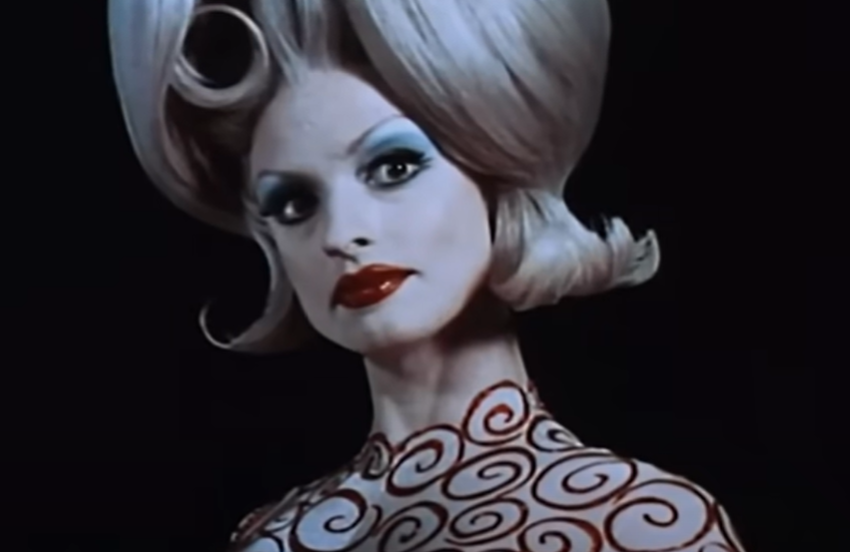 Warner Bros., Mars Attacks! (1996)
Warner Bros., Mars Attacks! (1996)

